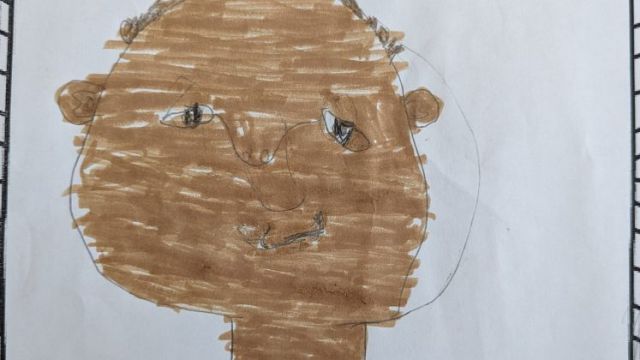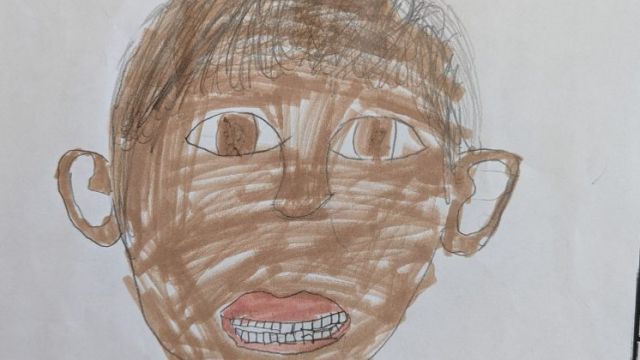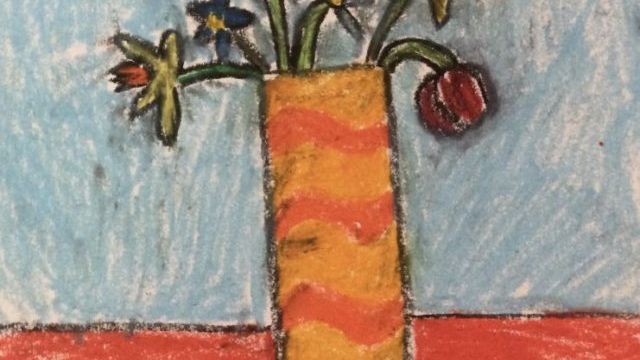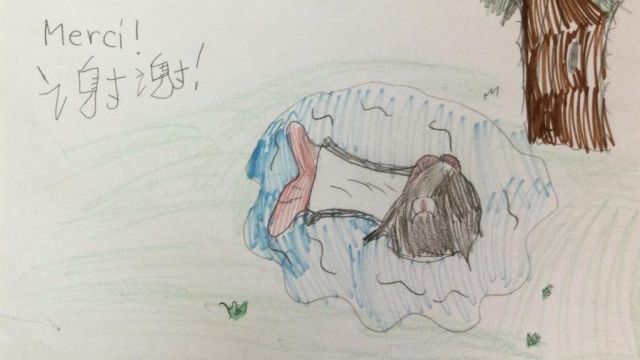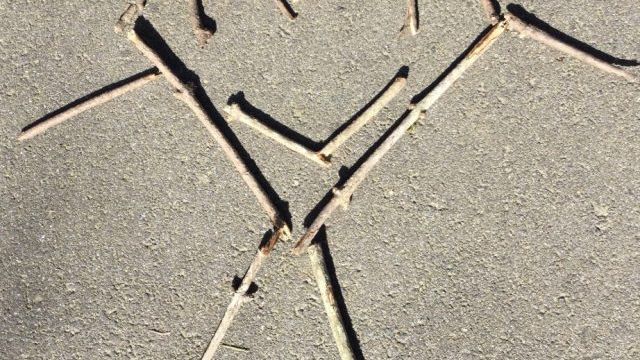We found a way to talk about ‘real world’ math today when talking about Halloween candy. Students shared what rules they have at home. How many candies are they allowed to eat per day? It then led to an important discussion about equality and value. What does the ‘equal sign’ represent in an equation?
C’est l’Halloween!
We’ve been learning Halloween vocabulary this month, whether it be in conversation activities or writing. We’ve also been listening to the classic Matt Maxwell “C’est l’Halloween!” song.
Term 1 is focused on personal writing. This week, students have been sharing whether they like Halloween and why (or why not).
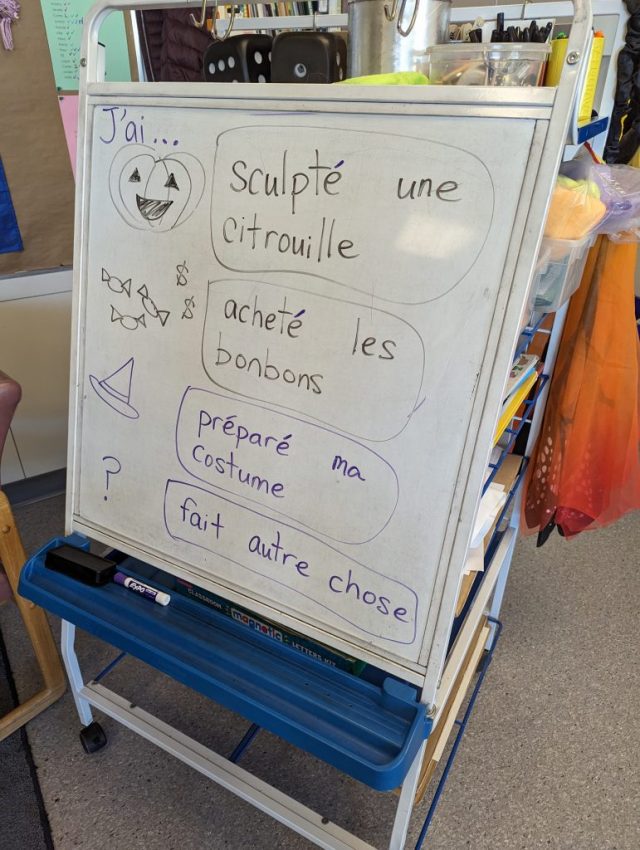

Nous voici!
Les ronces élégantes
Les fleurs
Students are learning to identify parts of flowers. We’ve been searching for spring flowers that grow in our local environment. We’ve been learning new words and how to draw ‘like a scientist’.
 Knowing the parts of a flower helped us draw abstract flowers in art recently. Enjoy the beautiful blooms!
Knowing the parts of a flower helped us draw abstract flowers in art recently. Enjoy the beautiful blooms!
On identifie les plantes!
 On today’s sortie nature, some students used field guides to try to identify spring flowers near our school. We noted similarities and differences between local wildflowers. We found it easiest to compare petal and leaf shapes.
On today’s sortie nature, some students used field guides to try to identify spring flowers near our school. We noted similarities and differences between local wildflowers. We found it easiest to compare petal and leaf shapes.
With a little extra help from the Seek app, we found la jacinthe espagnole (Spanish Bluebell), le lamier jaune (Yellow Archangel), la pâquerette (Common Daisy), and le laurier-cerise (Cherry Laurel).




Une visite d’artiste!
 Kwakwaka’wakw artist Simon James returned to École Westridge this month to touch up his tableau at our front entrance. Students learned about the carving’s history and significance.
Kwakwaka’wakw artist Simon James returned to École Westridge this month to touch up his tableau at our front entrance. Students learned about the carving’s history and significance.
They learned that it was carved from ancient cedar over 1000 years old! They also learned of the 10 animals on artwork and what they each represent. Each animal represents a school value.
Mr. James also spoke of the importance of knowing one’s culture and celebrating it. Students were encouraged to think of their own culture(s). Where do their elders come from?
As a thank you gesture, Division 10 students drew pictures of an animal or plant discussed during his artist talk. One student drew a detail shared about Mr. James education as a carver in his Indigenous community. Finally, when expressing gratitude, could they say ‘thank you’ in their elders’ language(s)?
We recognized that we all share English and French culture via the languages we’re learning every day. However, our classroom is wonderfully diverse with roots spanning not only across the country, but the world.
Qu’est-ce qui pousse?
Le parfum de forêt
 Students were asked to create a forest ‘perfume’. We discovered that le cèdre was the most fragrant. Other plants were used, such as clover, lichen, or fir needles. Some even threw in pinecones and dead leaves for an especially earthy smell!
Students were asked to create a forest ‘perfume’. We discovered that le cèdre was the most fragrant. Other plants were used, such as clover, lichen, or fir needles. Some even threw in pinecones and dead leaves for an especially earthy smell!
As always, we only collected plants from the forest floor. We’re aiming to not harm living plants. We’re also aiming to not disturb our local ecosystem.
L’art de bâtons
Sometimes, we get inspired by nature to make art. In this math activity, students were asked to create 2D picture art with sticks. They were asked to only use 12 sticks and for them to be as straight as possible. Then, they were asked to identify shapes within their art.
We counted sides and noted the number of vertices. We practiced using words like un triangle, un carré, un rectangle…We started identifying special polygon shapes too, like un hexagone.
We ran out of time, but it would have been interesting to extend this activity by only using ‘small’ sticks. How would their picture art change? What if a range of stick lengths were used instead? Would that change the picture again?
This activity was taken from the fantastic book, Messy Maths, by Juliet Robertson.











